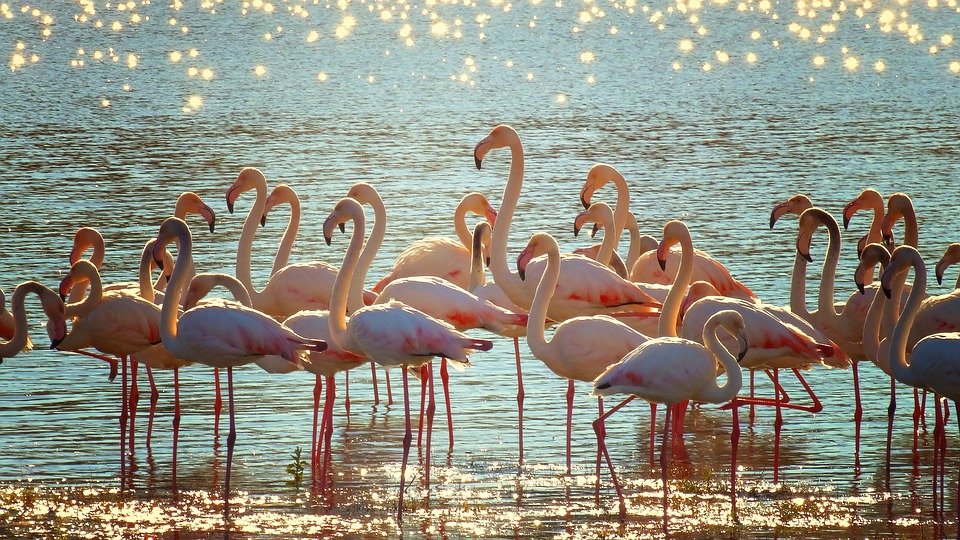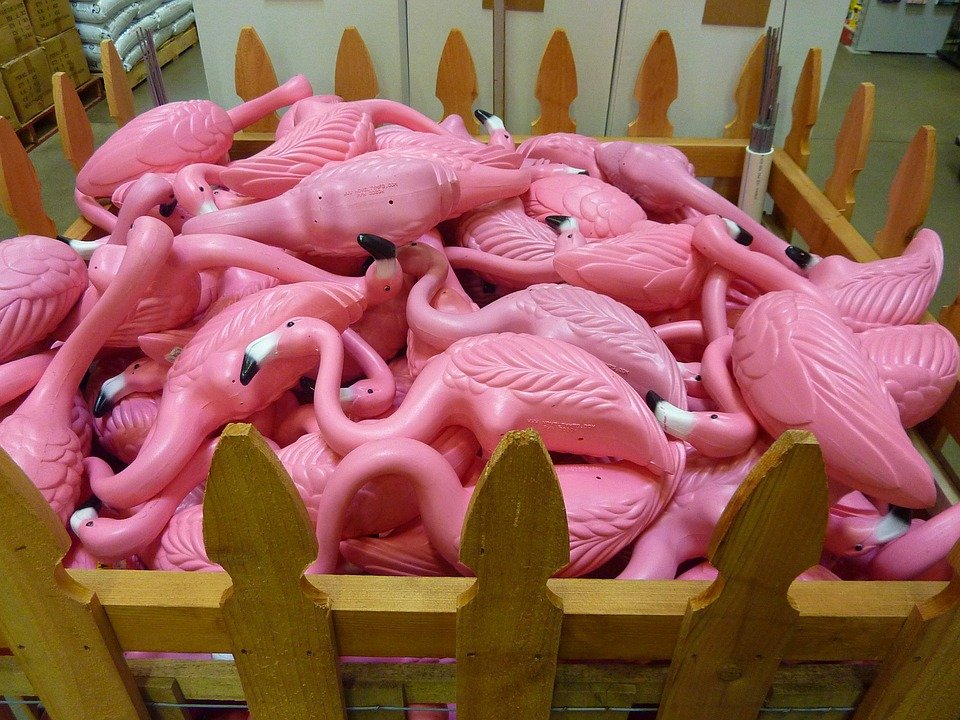Plastic pink flamingos are one of the more iconic lawn ornaments in the United States. And they can make certain spaces look brighter and more fun. But have you ever wondered how the craze about these plastic lawn ornaments began? Here is the history of the pink flamingo lawn ornament and as well as a pink flamingo in popular culture.
History of the Pink Flamingo Lawn Ornament
In 1957, Don Featherstone, an art school graduate, designed the plastic pink flamingo while he was working for Union Products (a now defunct company). His work on several initial plastic mold ideas including a duck before he subsequently was asked to make the pink flamingo which became an instant success.
In order to design an accurate flamingo, Don Featherstone copied photos from National Geographic magazines. These plastic pink flamingos were originally sold in pairs where one would stand upright and the other with its head down. They were made of hot pink and yellow plastic and stood three feet tall.
Before plastic pink flamingos were made, the most popular lawn ornament in the United States was the garden gnome. However, its origin came from European tradition while the plastic pink flamingo was a totally American invention.
However, even while the initial release of the plastic flamingo was successful, its popularity slowly declined during the late 20th century. In some residential areas, the pink flamingo was quite a controversial issue because some housing associations have banned it together with similar lawn ornaments because they felt these lawn ornaments were tacky and lowered property values.
Luckily, this icon has survived and we can still purchase pink flamingo lawn ornaments today. It was in 2010 when the production of plastic pink flamingos increased again after the Cado Company attained rights of the lawn ornament molds. Even with its controversies, the plastic pink flamingo has become an icon of pop culture. It even won Featherstone an Ig Noble Prize for Art (a parody of the Nobel prize) back in 1996.
Pink Flamingos in Popular Culture
For the early Egyptians, flamingos represented the god of the sun, Ra. For them, flamingos were there to remind them of the work of Ra and therefore went out of their way to preserve these animals. In Peru, they are considered as sacred animals. They were preserved and can be found in various types of artwork. There are also a lot of stories and legends stating that flamingos are the savior of animals because of the way they bend their necks and they can fly, live on land and on the water.
The pink flamingo lawn ornament has three basic elements which are its plastic material, pink color, and the flamingo design. But did you know that these elements also have particular relevance to the late 1950’s?
During the postwar era, cheap, sturdy, and versatile plastics became a popular material for mass-produced commercial products. And the color pink at that time was perceived as young, daring, and omnisexual. The pink flamingo lawn ornament designed by Featherstone was not the first time flamingos entered the American culture. In fact, Americans have long cherished flamingos especially during 1957 when the Caribbean culture became popular.
The first luxury hotel in Miami Beach was even named “The Flamingo”. Eventually, Florida and flamingos became synonymous with wealth and leisure. As the years passed, Florida became a vacation destination for middle-class and working-class families and the flamingo was associated with a region that is both exotic and affordable.
Even with the plastic pink flamingos’ significance with a lot of things in 1957, the lawn ornament was almost ridiculed as kitsch in the 1960s. The preference in the middle class was for lawns that are well manicured and free of ornaments. But the working-class tended to be more expressive and favored loud and more playful, decor for their lawn and home.
In the 1970s, pink flamingos became trendy and cool again. Plastic pink flamingos also had a prominent role in the film by John Waters titled “Pink Flamingos” that was released in 1972. After that movie hit the theaters, the bird had fully transitioned to the realm of ironic kitsch.
In the present time, plastic pink flamingos are still spotted on gardens and they can even be seen for example gracing planters on brownstones off Park Avenue in Manhattan. Aside from the plastic flamingos used as lawn ornaments, you will also see them as part of collectibles in many parts of the worlds. These can be in the form of magnets, water globes, and even in travel browsers. Plastic flamingos are even being used as wedding decorations and housewarming gifts.
There are millions of plastic flamingos being sold yearly around the world and in Florida. It illustrates how far the bird has migrated among American classes and tastes. Plastic pink flamingos may be kitsch, but is it undeniably an American cultural icon.


